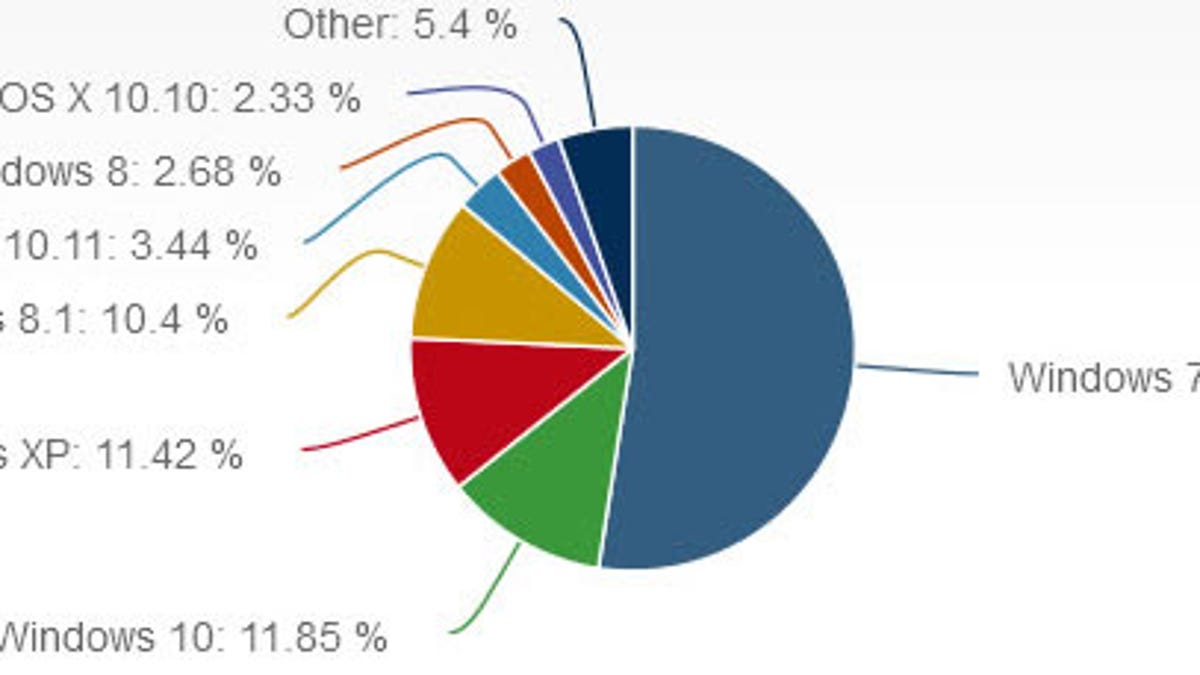Windows 10 overtakes XP and 8.1, still lags behind 7
Microsoft's latest operating system is now a distant second behind No. 1 Windows 7, according to the latest stats.
Six months after launch, Windows 10 has finally leapfrogged over both XP and 8.1 to become the second most popular desktop operating system in terms of Web traffic.
In January, Windows 10 snagged a global market share of 11.85 percent, up from 9.96 percent in December, researcher Net Market Share reported Monday. The latest number showed a healthy upturn following several months of slower growth in adoption.
At the same time, Windows XP usage actually inched up about half a point from last month to 11.4 percent, while Windows 8.1's cut of the market remained flat at 10.4 percent
The increase in market share for Windows 10 signals that the new software may finally be getting a measure of mainstream awareness. Following the poor reception to Windows 8, Microsoft is eager to prove that its successor, Windows 10, is an appealing and user-friendly operating system.
Windows 7 and 8.1 users have six months left to take advantage of the free Windows 10 upgrade, which is good only for one year following the software's release on July 29. After the freebie expires this summer, Windows 10 will cost them $119 for the Home edition and $199 for the Pro version.
Windows 7 kept its lead among desktop operating systems last month, but its share dropped to 52.4 percent from 55.6 percent in December, a sign that more people are jumping ship to Windows 10.
Microsoft has been pushing the free upgrade through frequent pop-up reminders, which some may find annoying but which have undoubtedly helped trigger the increase in Windows 10 adoption. Windows 10 is still listed as an optional upgrade, but Microsoft said it will change that status to a recommended upgrade early this year, which could prompt more people to install it.


